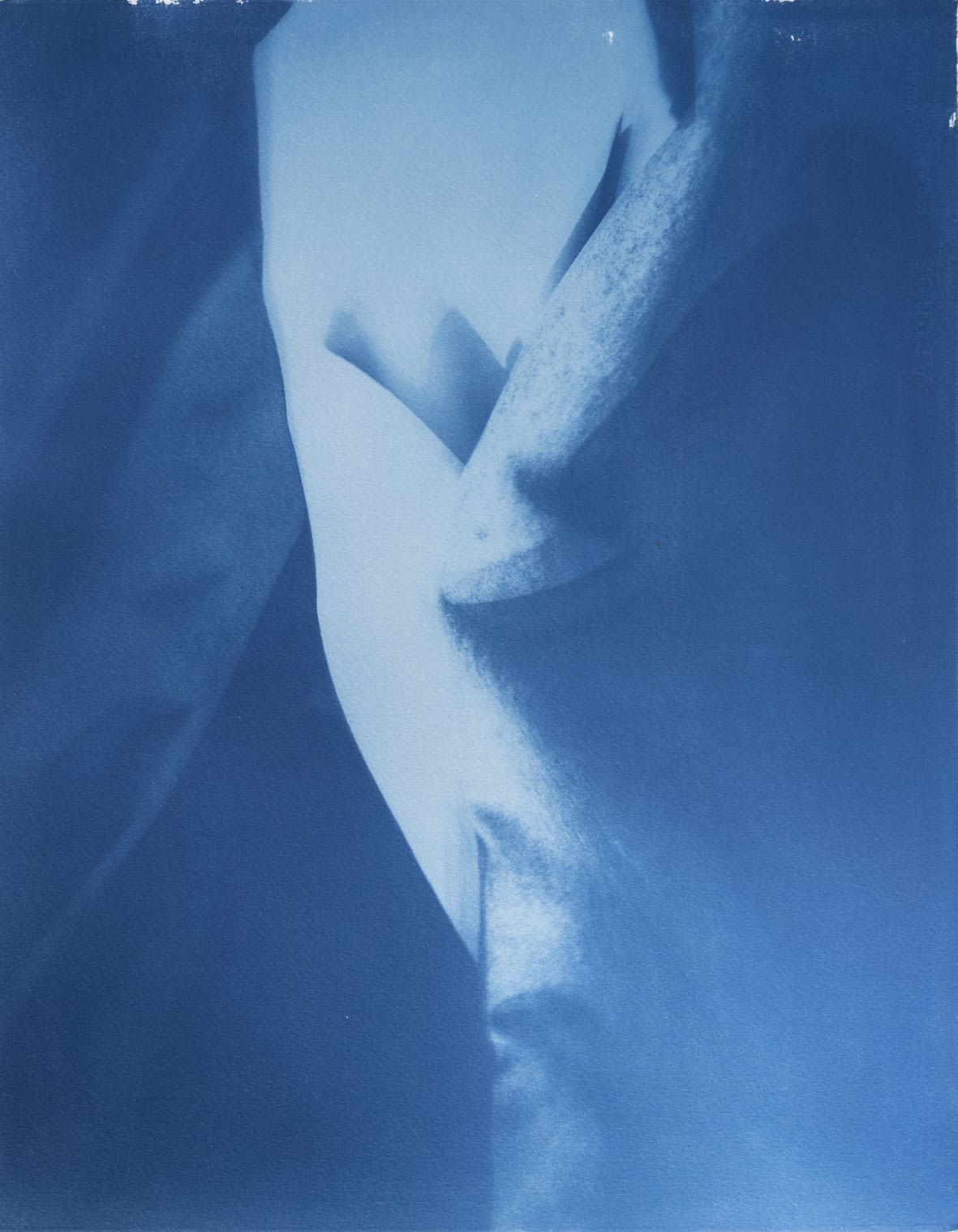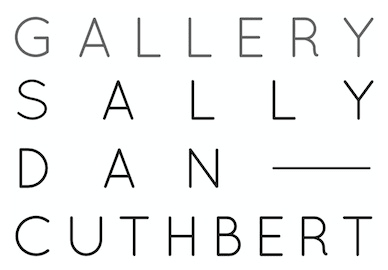Underwater ruins and antiquated atlases form sites of inspiration for Polish-born Australian artist Izabela Pluta, who uses photographic processes, video and three-dimensional elements to explore concepts of place, space and time.

What is it that draws you to ruins?
I became interested in ruins as visual depictions of estrangement, separation and detachment from the flow of time. I started drawing upon them as visual references through found material, like photographs and books. I have developed a layered and complicated relationship with ruins and photography that, in my mind, play off one another.
Is it the other, previous life of ruins that interests you or is it something else?
There is a metamorphosis that happens with ruins, when they change from their original form. It is this aesthetic and allegorical potential that I am drawn to in these kinds of places. Philosophically, ruins are symbolic and conjure up a kind of sublime that can transport you to another place. This other place stems from me thinking about how my work might articulate the idea of being from somewhere else.
Can you tell me about your work, Apparent Distance, that was commissioned for ‘The National: New Australian Art’ at the Art Gallery of NSW earlier this year?
A couple of years ago I heard about a sunken rock formation located off the westernmost inhabited island of Japan, Yonaguni (which is just 108 kilometres east of Taiwan). It has a contested mythology but there is also dispute among archaeologists and scientists about whether the formation is a naturally occurring form or a human-made artefact. In 2018 I went to Yonaguni to scuba dive the ruin. It was challenging because the conditions are quite extreme on the edge of the Pacific Ocean, with incredibly powerful currents that only allow diving to occur during three months of the year.
So you are a scuba diver?
Yes, I’m qualified as an advanced deep-water diver. But before we went out to the monument, I needed to do a cave dive with the instructors and also a blue dive. I hadn’t done a blue dive before. We were taken a couple of kilometres offshore and dropped, without a line, into the ocean. We were suspended about 30 metres down, drifting in the current. It was like a meditation, there was nothing to see, just the vastness of blue all around us without any sense of orientation!
Where did the title Apparent Distance come from?
Depending on the currents, diving Yonaguni can take a little under an hour or just a couple of minutes. The visibility underwater changes depending on the currents and light – that is where the title came from. The idea of seeing under this massive body of blue space is fraught in itself. It’s constantly changing, all these variables around luminosity and objects are optically at a distance that makes them appear differently.
I am not really an adventure seeker; I was there to see and feel and capture. I work slowly so what I brought back to the studio was a lot of underwater images taken on film, video, aerial drone photography and paraphernalia. I wasn’t making a documentary or a photographic series necessarily about the monument, so it became a process of reorientating the work to the experience of that dive and the intensity of what I felt underwater.
You use textiles in this work, have you done this before?
No, this was the first time. I wanted to show elements of the formation that I had seen but also to cover and conceal it. The work is somewhat sculptural, and I wanted the textile to give the sense that it could all potentially collapse – the idea that nothing is fixed. There was a challenge that despite working from a maquette in the studio for months leading up to the exhibition, when installing the work it behaved differently. The folds and drapery operated in a way I only imagined when conceiving the work: the image collapsed in on itself, repeating, in and out of sync, where the same piece of the subject appeared and then disappeared from view. The images on the textile became three-dimensional and each fall of the drapery was soft and often distorted the original image. So in a sense, it was a way of trying to articulate the uncertainty of location.
Your photographic practice expands what we often think of as photography to incorporate sculptural forms and installation.
I have this very precarious relationship with photography. I am invested, consumed by and in love with the medium and all the complex ideas that come from it, but then I try to resist its language, or I question its use. Maybe that’s why what I make is increasingly shifting – moving across, photographing out in the landscape or in the studio, collecting material that I then disorientate from the original source.
I think that the way we relate to an artwork, how our body behaves in a space can produce a profound engagement. I have felt more and more that the way I hang or sometimes lean a work against a wall, or work with photographic material that is more three-dimensional, tries to play with these spatial body relations.
Your work brings together photographic process with thematic and conceptual concerns in a delicate and succinct manner; can you explain this more?
Recently I have been making contact negatives from a set of out-of-date atlases. Part of this work was originally shown in the Artspace Ideas Platform, Sydney, in 2018 and will be published as an artist book by Perimeter Editions later this year. As someone who came to Australia from Poland, I’m interested in how borders continually shift, in geography and the perception of place – so I pulled the atlas apart and took it into the darkroom. Using an enlarger, I passed light through the relief maps employing a camera-less technique to create images. As light passes through both sides of the paper, it fuses the two maps together arbitrarily based on how the atlas was put together.
This process of making contact negatives produces undulations in the image where the original map lifts away from the photographic emulsion, blurring areas of the image. Where the paper is touching the emulsion it maintains sharpness. I don’t use glass in this process so there is an element of chance with certain variables, including humidity or how that original page has aged – whether it curls up or not – creating these collapses of distinction in the counter map that’s formed. These ripples, or areas in the image that lack focus, could be read as deceptive spaces, provoking a sense of dislocation or disorientation from place and a questioning of what is recorded, and how it is shaped by the map in the first place.
Is photography changing as viewers become more astute at reading images in our digital world?
Images are omnipresent, our interactions with them are fleeting, superfluous almost. The idea of slowing down the way we look and engage with imagery is important to me. Part of the way I consider photography, through re-appropriating found material and working with darkroom processes or found books or atlases, is perhaps an attempt to slow down the experience of looking but also to test different ways of imagining what a photograph can be and make us more attuned to how images operate.
What does 2020 hold?
I’m working on an installation made up of photographs and video, a kind of video collage, responding to the collapse of a sea arch in Malta and the accidental plummeting of my drone into the sea. This will be shown in my solo exhibition at the Spazju Kreattiv, the National Centre for Creativity in Malta.
This article was originally published in Artist Profile, Issue 49, 2019
EXHIBITIONS
Civilisation: the way we live now
13 September 2019 – 2 February 2020
The National Gallery of Victoria, Melbourne
Izabela Pluta | Variable Depth: Shallow Water
10 April – 24 May 2020
Spazju Kreattiv, Malta
Izabela Pluta is represented by Gallery Sally Dan-Cuthbert, Sydney


